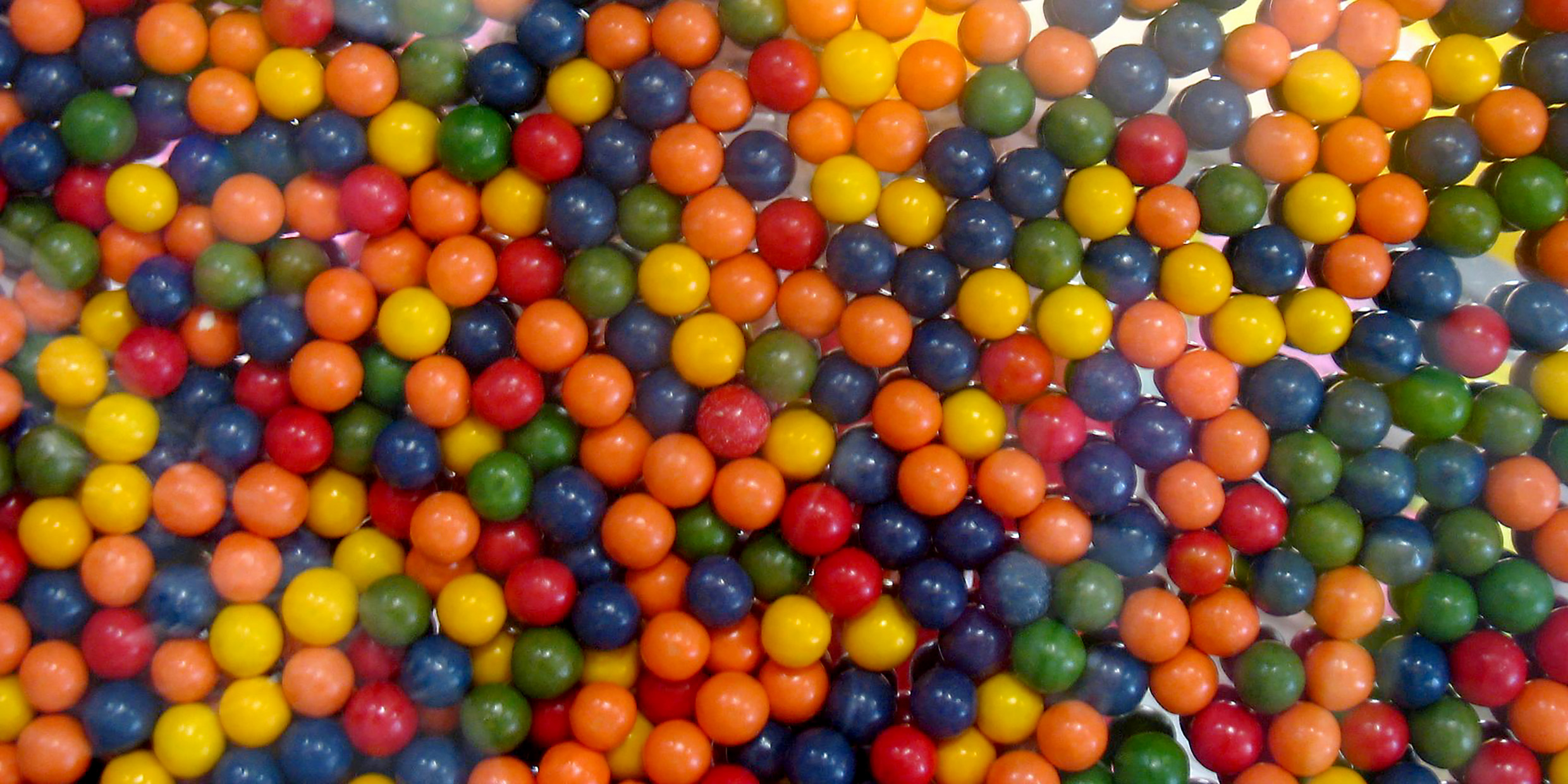Originally published 25 March 1991
How many gum balls can you fit into a gum ball machine? And does it matter?
It probably doesn’t matter to gum-ball machine owners, who aren’t particularly concerned about squeezing a few more balls into their machines, especially if it means paying someone to pack them in a particular way. But it matters to mathematicians. Questions like this are the mathematician’s stock in trade.
So how do you fill a space most completely with equal-sized spheres? Renaissance astronomer Johannes Kepler guessed the answer almost 400 years ago: Arrange a layer of balls in a triangle (like billiard balls in the standard triangular rack) and then pile more balls on top (like a stack of cannon balls). Extend the arrangement in every direction. Each ball will touch twelve neighbors, six in the same layer, three above, and three below. There’s no more compact way of stacking spheres.
The trouble is, Kepler couldn’t prove his guess and mathematicians like iron-clad certainty. Now along comes a mathematician who thinks he has found a rigorous proof of Kepler’s guess. Wu-Yi Hsiang of the University of California at Berkeley is putting the finishing touches on a 100-page proof of the 400 year-old unsolved problem. If Hsiang’s fellow mathematicians can’t find a flaw in his proof, the sphere-packing problem will be laid to rest forever.
Why care?
Did I hear a stifled yawn? Are you wondering why anyone should care how many gum balls can be packed into a gum-ball machine? Well, mathematicians care because that’s the sort of thing that turns mathematicians on (really!). And certain engineers care because sphere packing does have application to such practical matters as radar and CAT scans. But for most of us the real interest in gum-ball packing lies elsewhere, and to find it we go back to the original sphere-packing man, Johannes Kepler.
Kepler discussed the problem in a little book called The Six-Cornered Snowflake, published in 1611. The book is not nearly as well known as it should be. Kepler is best known for figuring out that planets move in elliptical paths. In The Six-Cornered Snowflake he asks an even more fundamental question: Why does nature take the shapes it does?
All around him Kepler observed beautiful shapes in nature: six-pointed snowflakes, the elliptical orbits of the planets, the hexagonal honeycombs of bees, the 12-sided shape of pomegranate seeds. Why? he asks. Why does nature display such mathematical perfection?
Why does the stuff of the universe arrange itself into five-petaled flowers, spiral galaxies, double-helix DNA, rhomboid crystals, the rainbow’s arc? Why the five-fingered, five-toed, bilaterally symmetric beauty of the new-born child? Why?
Kepler struggles with the problem, and along the way he stumbles onto sphere-packing. Why do pomegranate seeds have twelve flat sides? Because in the growing pomegranate fruit the seeds are squeezed into the smallest possible space. Start with spherical seeds (the shape of gum balls). Pack them as efficiently as possible (with each sphere touching twelve neighbors). Then squeeze. Voila!
And so he goes, convincing us, for example, that the bee’s honeycomb has six sides because that’s the way to make honey cells with the least amount of wax. His book is a tour-de-force of playful mathematics.
The shape of nature
In the end, Kepler admits defeat in understanding the snowflake’s six points, but he thinks he knows what’s behind it all, behind all of the beautiful forms of nature: A universal spirit pervading and shaping everything that exists. He calls it nature’s “formative capacity.”
We would be inclined to say that Kepler was just giving a fancy name to something he couldn’t explain. To the modern mind, formative capacity sounds like empty words.
We can do better. For example, we explain the shape of snowflakes by the shape of water molecules, and we explain the shape of water molecules with the mathematical laws of quantum physics.
Since Kepler’s time, we have made impressive progress towards understanding the visible forms of snowflakes, crystals, rainbows, and newborn babes, for starters, by probing ever deeper into the heart of matter.
But we are probably no closer than Kepler to answering the ultimate questions: What is the reason for the curious connection between nature and mathematics? Why are the mathematical laws of nature one thing rather than another? Why do natural forms exist at all?
It was thinking about such problems that led Kepler to discover the sphere-packing theorem that Wu-Yi Hsiang now claims to have proved.
And that’s why sphere-packing matters to the rest of us. Mathematics and natural forms are intimately related. Thinking about gum balls in gum ball machines can be a profoundly philosophical activity.
Hsiang’s 1990 proof was later found to be incomplete. It wouldn’t be until 2017 when a formal proof to Kepler’s sphere-packing conjecture would be accepted by the mathematical community. ‑Ed.



